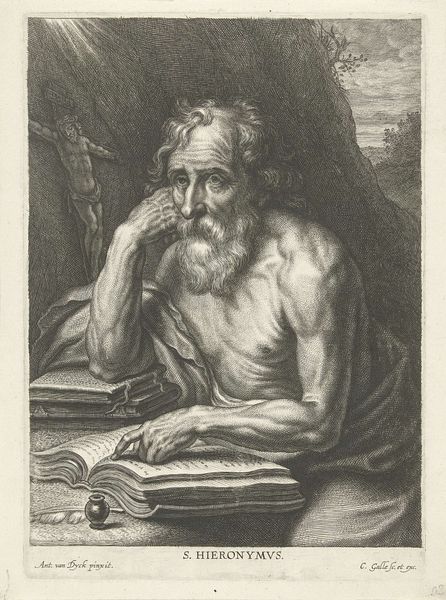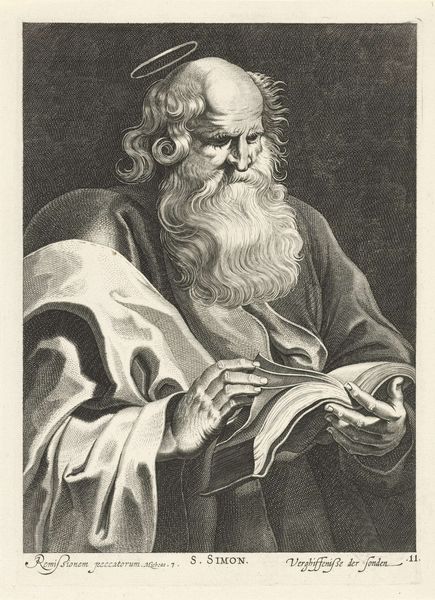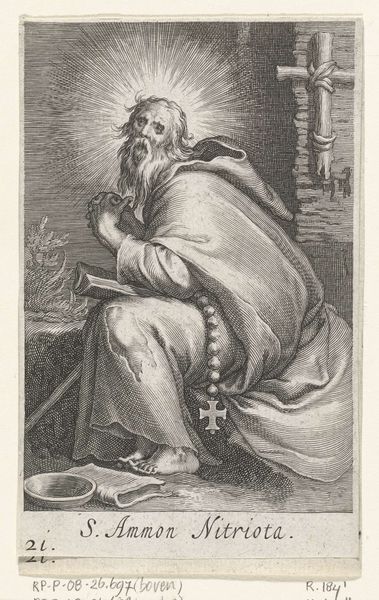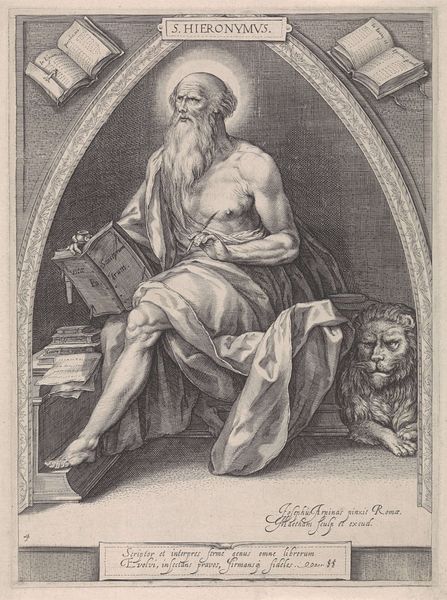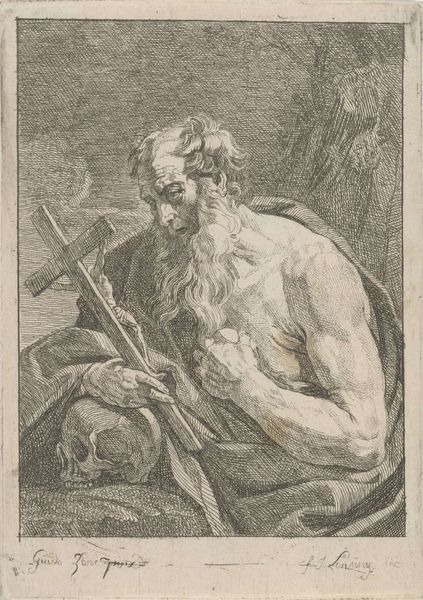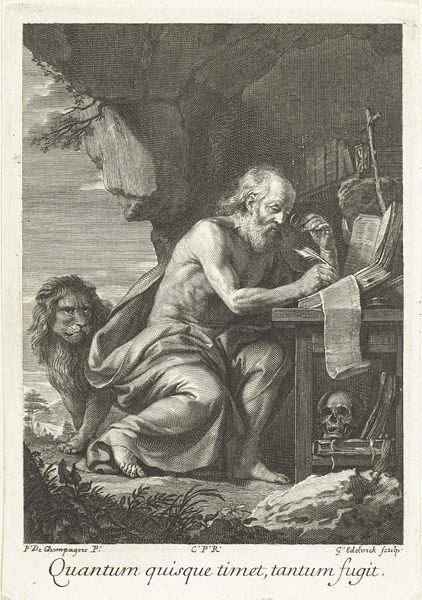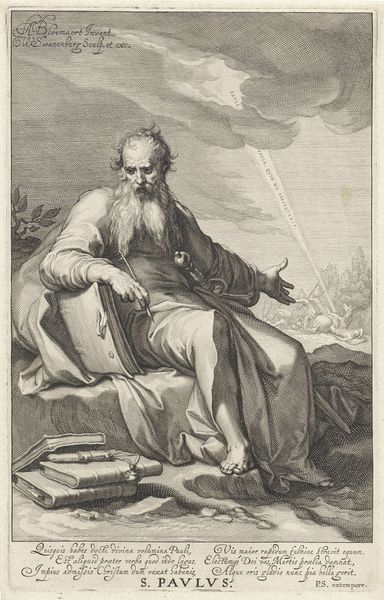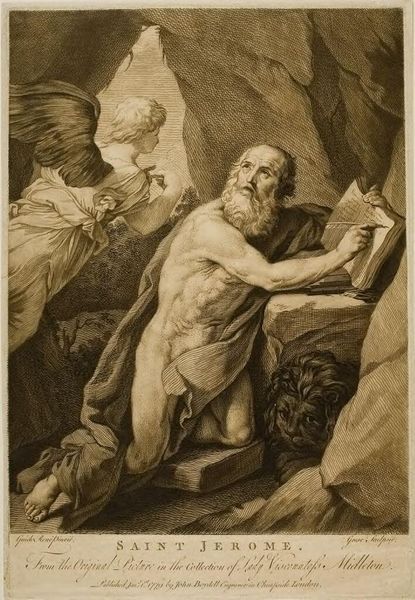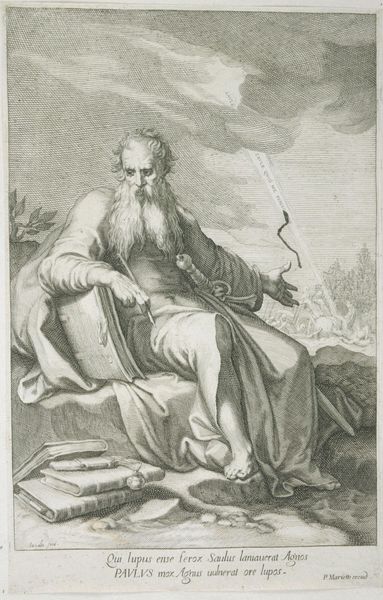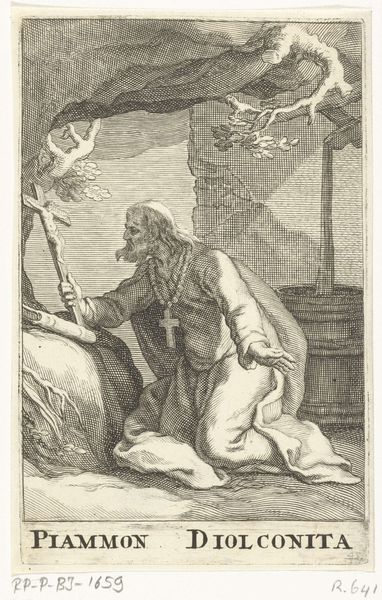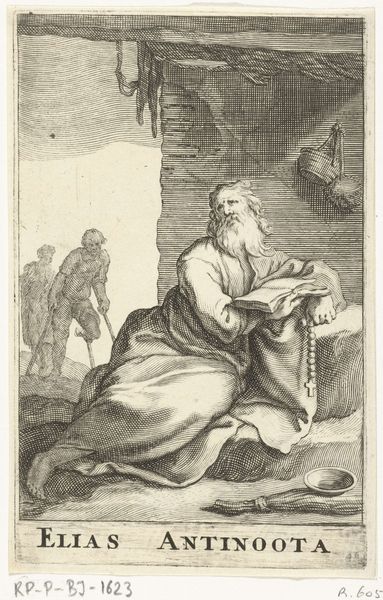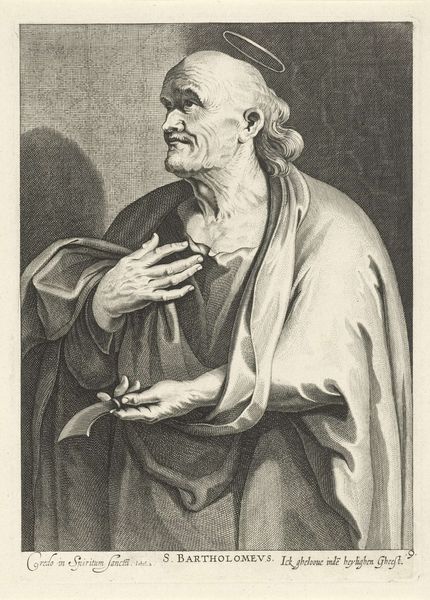
print, engraving
#
portrait
#
baroque
# print
#
charcoal drawing
#
figuration
#
chiaroscuro
#
portrait drawing
#
genre-painting
#
history-painting
#
engraving
Dimensions: height 368 mm, width 246 mm
Copyright: Rijks Museum: Open Domain
Editor: This is "Heilige Hieronymus," an engraving by Pieter Fransz. de Grebber, created sometime between 1610 and 1655. It's strikingly stark in its contrasts. What draws your attention when you look at it? Curator: I’m interested in how the image functions as a commodity within a specific economic and social system. De Grebber's workshop and the engraving process itself point to networks of labor and skill. We might ask, who was consuming these images of religious figures and why? What value did they hold, both monetarily and ideologically? Editor: That’s fascinating. So, you’re looking at the print not just as a representation of St. Jerome, but as an object with a history of production and exchange? Curator: Precisely. Consider the materiality of the print – the paper, the ink, the very act of pressing the image onto the page. These are all material facts, evidence of human labor transforming raw materials into something that circulates within society. And the subject itself is rendered in almost crude musculature; What social class did this artist or patron represent? How did his reality make its way into the lines on this page? Editor: I see. It shifts the focus from the spiritual aspect of the subject to the physical reality of its creation and consumption. It also makes me think about the role of prints like this in disseminating religious imagery at the time. Curator: Exactly! And don’t forget the engraver. The translation of De Grebber’s original design through the skilled labor of another artisan adds another layer to this process of production. The print exists in a chain, from artist to artisan to consumer. Editor: That really reframes how I see this piece. It's no longer just about religious devotion, but also about industry, labor, and accessibility. Curator: Indeed. And by understanding these material conditions, we can gain a richer understanding of the cultural landscape in which this image was produced and received. I now wonder about that skull... Was this an allusion to death and dying as a call for wealthy donors to provide patronage and have their souls "saved"?
Comments
No comments
Be the first to comment and join the conversation on the ultimate creative platform.
